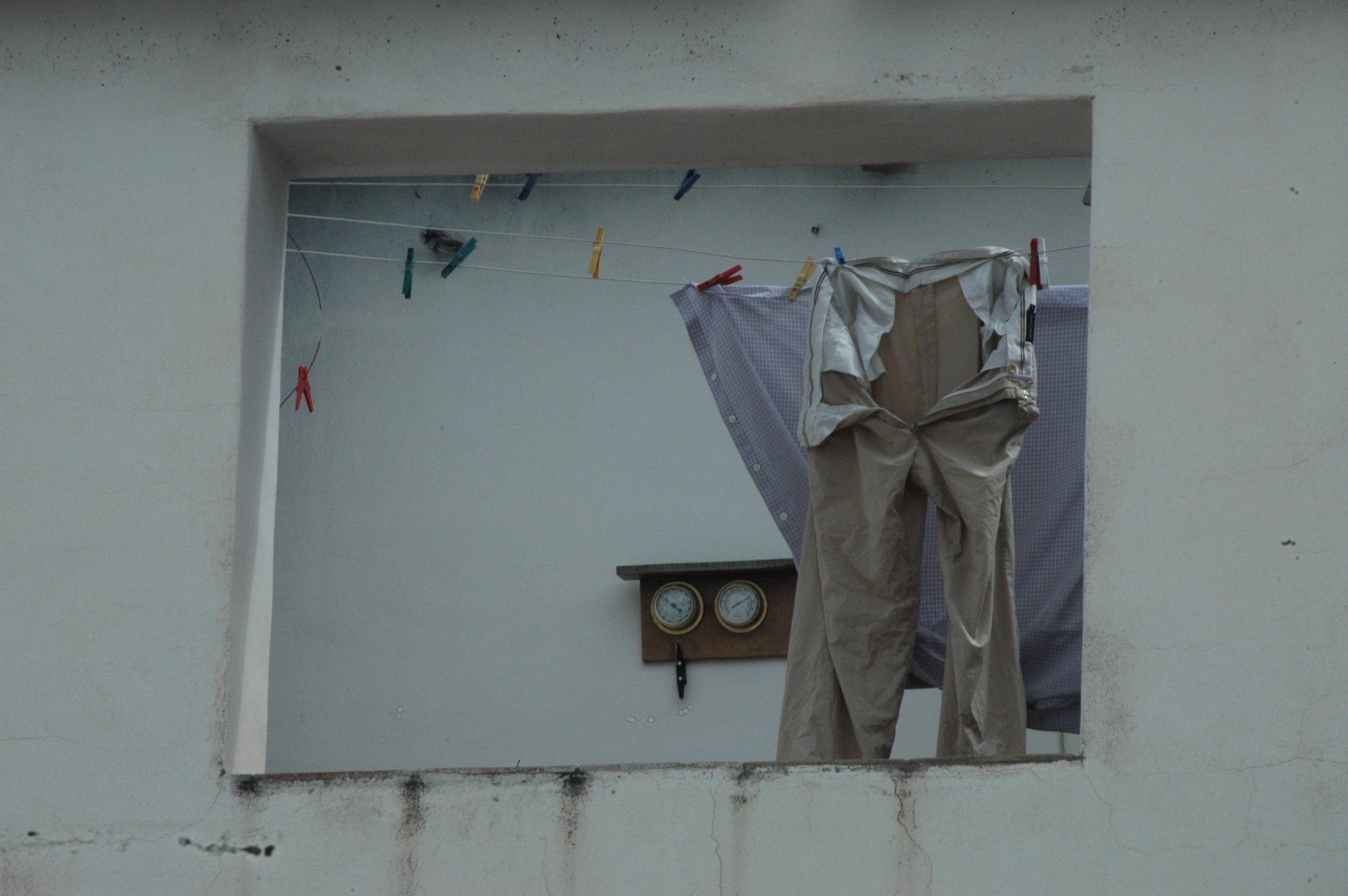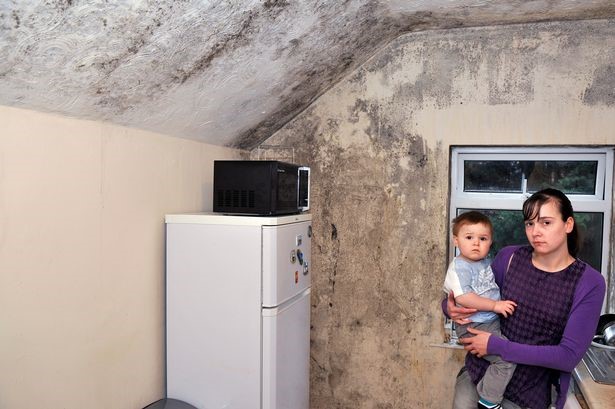
Sensor data inform cost-effective approaches to damp and mould problems. They may be as simply as changing occupants’ behaviour, or they may require renovations to...
The problem of damp and mould in the social rented sector can only be solved when landlords have good data on the problem. Sensor networks can provide data that will not only identify rooms at risk of damp but a host of other current and potential problems as well.

|
This article is the third in our series on damp and mould in the home. The others are:
Mouldy homes 1: how damp causes mould
Mouldy homes 4: how to dry out damp Britain
Mouldy homes 5: is infrared a solution?
The previous articles in this series discussed how damp and mould arise and why they appear most often in the social rented sector. It is problem that demands solutions, but an effective solution for any given property needs to be based on a thorough understanding of the problem.
It’s no secret that heating and ventilation banish mould. Yet damp and mould have long been a persistent problem in British housing. Even former Prime Minister Boris Johnson has noticed; in a foreword to the government’s white paper on a charter for social housing residents, he related an anecdote from his days as a ‘cub reporter’, when he visited a Wolverhampton council flat with ‘black spores of mould metastasising across the walls’. It’s the mycelium, not the spores, that he would have seen on that wall but leaving basic mycology to one side, Johnson’s anecdote illustrates the fact that the problem of mould in the social rented sector is neither new nor hidden.
Although the nationwide scale of the problem is common knowledge, a 2021 report [PDF] by the Housing Ombudsman described how individual cases are often unknown to the individual who can do something about them. That’s because most social housing landlords are corporations managing large property portfolios, and the person responsible for the maintenance of any given property is one of the many employees of the corporation. The Ombudsman’s investigations often found landlords dependent on complaints from tenants to reveal problems with their properties, but that dependence often went hand-in-hand with tortuous lines of communication. Complaints often got lost before they arrived at the desk of the person empowered to act on them.
The verdict on the death of Awaab Ishak, the toddler whose death was partly caused by mould inhalation, described exactly that sort of breakdown in communication. The mould in Awaab’s flat had repeatedly been reported as dangerous, not only by his family but also by a health visitor and by the landlord’s repair manager. It remains unclear whether the landlord’s chief executive was aware of the issue or not but that did not prove particularly relevant when the board fired him.
The board’s response was essentially in line with the Ombudsman’s position: the responsibility in such cases lies with the landlord. That’s why the Ombudsman returned a finding of maladministration in more than half the cases investigated.
Authorities like coroners and the Ombudsman tend to take the view that it is the landlord’s responsibility to be aware of health hazards in the properties they manage, not the tenant’s responsibility to navigate dysfunctional communication structures. The view is likely to be enshrined in regulation before long which, combined with the precedent set by domestic mould having been recognised as a cause of death, substantially raises the stakes for a landlord’s senior management if they are found to be negligent.
The practicalities of proactively identifying damp and mould problems - or indeed, problems of any kind - across a large property portfolio can be daunting.
The Ombudsman’s report recommended bypassing tenant reporting altogether and implementing ‘a data driven, risk-based approach with respect to damp and mould’, although it did not specify how the approach should be implemented. Indeed, much of the discussion of the issue presents data-driven approaches as desirable in principle but difficult in practice. A 2019 report by the UK Centre for Moisture in Buildings (UKCMB) lamented that ‘many of the methodologies required for testing have not yet been fully developed, are prohibitively expensive, and require multi-disciplinary teams and understanding’.
At Atamate, we do not believe data collection is as difficult as the UKCMB said is. Our view is that a data-driven approach to damp and mould can be approached in the same way that we approach a data-driven approach to renovating a building. Our white paper [PDF] describes how we use that approach to lower a building’s carbon emissions to net zero but the essence of the approach is the same whatever the objective: install a network of sensors and meters that provide detailed data on a building’s indoor environment and energy use, then use that data to work out the most effective and affordable way to address the issue at hand, whether that issue is lowering energy use, solving a damp problem or both.
The key piece of equipment is the Atamate ceiling sensor, which is not a single sensor but an array of sensors that monitor the indoor environment. With regard to damp, the most important measurements are relative humidity and thermopile, which measures the temperature of a surface like an outside wall or window. If the relative humidity is habitually above the 80% threshold and the surface is cold enough to condense water, a landlord can conclude that if there is not yet a mould problem, there soon will be.
A limitation of the thermopile is that it measures the temperature of a small area of a wall for which the overall temperature may not be even. Mould problems are often caused by ‘cold bridges’, where the temperature of an otherwise sufficiently insulated wall may fall below the condensation threshold. Using thermal imaging can identify such areas that may be missed by routine sensor monitoring.
Collecting room-by-room data across multiple properties risks replacing one information problem with another: instead of having insufficient information, a landlord could be overwhelmed with so much information that they would not be able to distil out the indications of upcoming problems. The Atamate approach avoids information overload with software that continuously compares sensor data to predefined parameters of acceptability, and alerts a property manager when the indoor environment falls outside those parameters.
For addressing damp and mould problems, the acceptable absolute limits would be based on the plot below, which defines the conditions conducive to condensation that would cause mould. Ideally, a landlord should aim to prevent damp forming at all, using the limits defined by a psychrometric chart.
The Ombudsman advocates a ‘holistic’ approach, acknowledging that damp is only one factor that affects a tenant’s wellbeing. Social housing tenants are often affected by fuel poverty which is often the reason why their homes are cold enough for damp to form in the first place: they cannot afford to heat the home above the threshold temperature.
As the National Housing Federation discussed in the 2022 Better Social Housing review, damp and fuel poverty are problems that often coincide with each other and with a host of other problems that pervade Britain’s ageing social housing stock. The report went on to recommend the Housing Associations’ Charitable Trust (HACT) data standards as a basis for auditing and identifying issues that require repairs.
If housing is in a poor enough state to have a serious damp and mould problem, it may well have other problems which need addressing, which is another reason to use a data-driven approach rather than depend on tenants’ complaints: good data on a property enables all aspects of that property to be considered, and avoids solutions directed at a single issue raised by a tenant that exacerbate another problem.
The next article in this series will discuss the options for addressing damp and mould problems, and how data can facilitate a holistic renovation that addresses multiple problems instead of solving one at the expense of another.
If you’d like to know more about how the atBOS platform can help address damp and mould problems, ask us on the form and we'll be happy to discuss it.

Sensor data inform cost-effective approaches to damp and mould problems. They may be as simply as changing occupants’ behaviour, or they may require renovations to...

In recent years, there has been a growing focus on the impact of air and housing quality on the health of children. In 2022, the tragic death of a child was attributed...